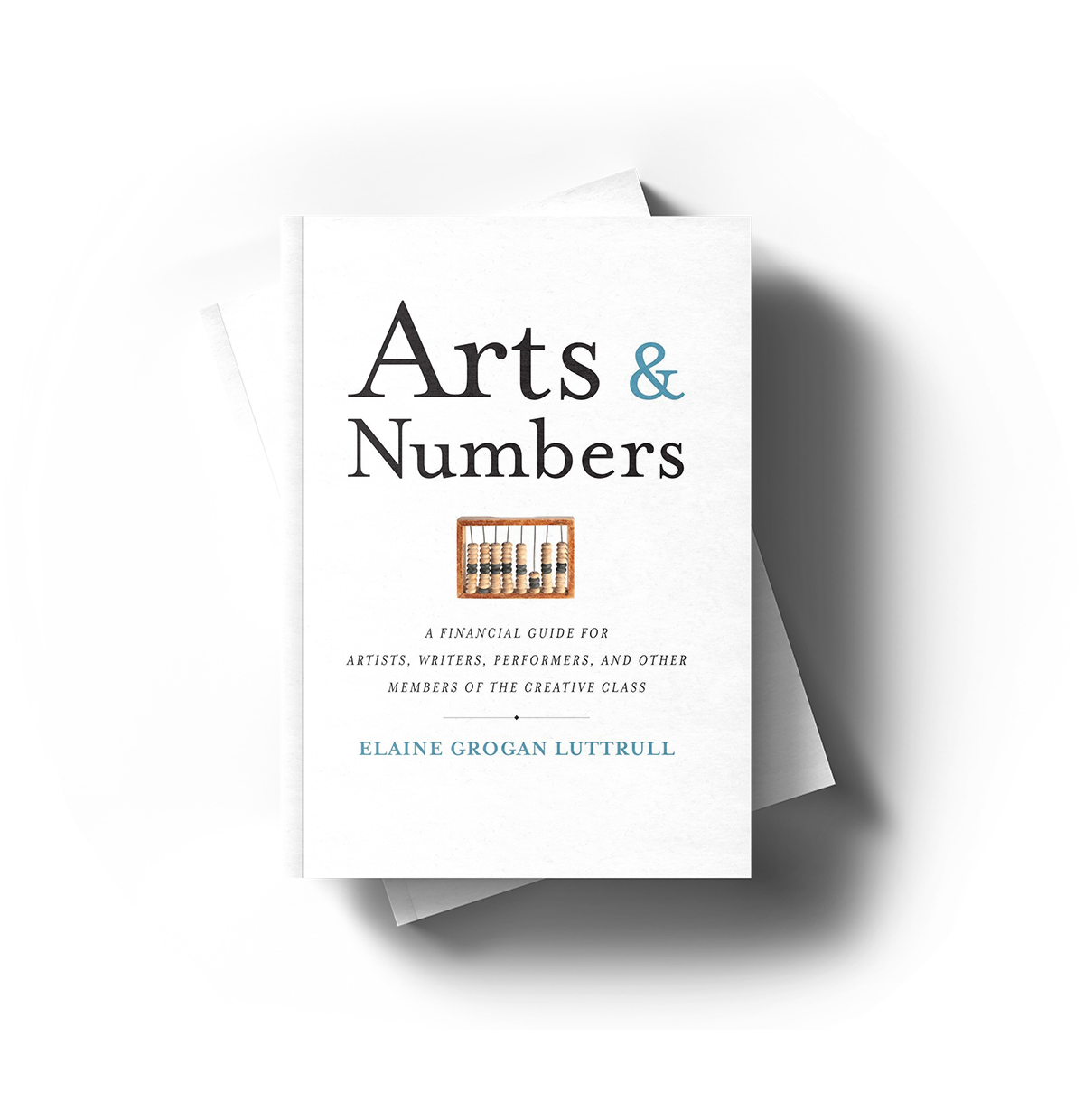August 10, 2015 • Musings
Flexible Ambiguity & the Creative Entrepreneur

Julie Taggart, the Dean of the School of Studio Arts at the Columbus College of Art & Design talks about “flexible ambiguity” in the context of managing change. What I love about this phrase is—you guessed it—its ambiguity.
Are we flexible despite the ambiguity around us? Are we flexible because of it? Is the ambiguity itself what is flexible? Perhaps yes to all of these.
It turns out we’re not going to know the ending of anything (at least not the nitty gritty details). We know we’ll all die at some point, but the details and the timing escape us. We know we’ll finish a particular piece eventually, but what it will actually become will remain a mystery until the end. We believe in the value of collaboration, but the fruits of the effort are (quite literally) out of our control.
Ambiguity is a given in most creative fields. Whenever we’re dealing with clients, potentially uncertain funding sources, audience reception, and—above all else—the creative process, there is going to be uncertainty and ambiguity. We won’t know the ending. We won’t know what’s to come.
Flexibility—and its cousin adaptability—is what helps creative entrepreneurs thrive despite this ambiguity. So can we become more flexible? And if so, how?
Self-Awareness
Resistance—that nagging feeling inside us—serves a very useful purpose: Protection. Ambiguity, change, and uncertainty make us a bit uncomfortable for the same reason our ancestor’s ancestor’s ancestors evolved to be cautious around unknown species. The hasty, reckless ones were eaten.
But rarely do creative entrepreneurs encounter deadly predators (although it may feel like it). It’s worth exploring the fear beneath our resistance to understand—and reason through—what is really nagging us.
Take a simple example: You always order the same thing at your favorite Thai restaurant. Ordering something new makes you a bit uncomfortable, not because you’re afraid it will kill you, but rather because you may worry you won’t like it and you’ll be faced with hunger or worse, public shame (not finishing your meal, being wasteful).
Better to order what you know than suffer either consequence, right? If that were true, we’d all still be eating pureed fruits and veggies with rice cereal.
Thinking through a solution to the underlying fears makes them easier to manage. Perhaps we combat lingering hunger by eating a peanut butter sandwich later. Perhaps we plan to take any leftovers to go so we can share them with someone a bit hungrier (a friend, a student, someone on the street).
We’re combating our very real gut response with other very real brain responses… And enabling ourselves to embrace uncertainty in the process.
Obviously, this is a simple example. Most of our professional and creative anxieties are a bit more severe than trying something new for dinner. But luckily, we’ve evolved beyond our ancestor’s ancestor’s ancestors. We can use our brains to understand our very real, very natural, very understandable gut reactions. And then plan accordingly.
Stuart Smalley
As we delve a bit deeper into that self-awareness, we may find that some of our gut reactions come from a place of self-doubt. Ambiguity and uncertainty exacerbates that self-doubt because the change brings up all the lingering uncertainties we have about our skills and our abilities to cope with new situations. Will we really be able to handle the increased responsibilities on the horizon? What if the new partner/collaborator/supervisor sees all of our weaknesses and none of our strengths? What other options do we really have?
There is often a fuzzy, meandering line that separates our realistic limitations from our perception of them, and ambiguity makes it much more difficult to navigate that line. Our self-awareness can help us identify our limitations—the realistic ones or the ones we accept because we choose to prioritize other skills—but the real challenge comes in quieting the inner voice that discounts our real skills, blurring everything we do and everything we are with the fog of self-doubt.
Stuart Smalley can help with that. Not literally, of course; he’s busy serving as the junior senator from Minnesota. (How’s that for flexible ambiguity in career planning?!?)
But channeling your inner Stuart Smalley or your inner Little Engine That Could in a meaningful way can quiet those inner (unfounded) fears. And if that doesn’t work, take a colleague out to lunch and let him or her help. Stuart Smalley repeated a three-part mantra. Try asking your friend or colleague to share three things about you that make you particularly well suited for your role. Stuart Smalley was good enough, smart enough, and people liked him. Perhaps you are a great communicator, a superior manager, and always willing to help a colleague. Maybe you dream up wonderful ideas, excel at delegating, and serve as a tremendous counselor to junior employees.
Sometimes we’re better at quieting the fears of others than we are at quieting our own. So don’t hesitate to book a friend for your own Stuart Smalley lunch. You may be surprised at what it reveals.
Practice
“Just try it!” is the refrain of attentive parents everywhere. The underlying “I told you so” moment happens when the recipient of the admonishment actually likes whatever it is he or she professed to be skeptical about.
But there’s something even more powerful happening when we don’t like something we try.
Yes, we affirm our deeply felt initial gut reactions (our own internal “I told you so!” moments). But more importantly: We realize the downside of empowering our brain to reason through our gut reactions isn’t so bad. No one dies; no one gets eaten. Our gut reaction was spot on, but the consequences it feared were greatly exaggerated.
Learning that enables us to trust our guts when it makes sense, and mitigate our gut fears when they are blown way out of proportion. (Note that mitigating our gut instincts isn’t the same as dismissing or ignoring them. Mitigating them requires acknowledging them, feeling them deeply, and deciding with our brains whether or not they have merit.)
That little bit of practice repeated over and over again in various contexts—just like our own Stuart Smalley exercises—helps us better embrace ambiguity.
Hedge
You know what else helps us better embrace ambiguity? Hedging. Hedging is the process of reducing risk (or trying to), and hedge funds (those investment vehicles you probably can’t join) started out as a practice of hedging against market movements, so that if the rest of your stock portfolio lost value, your hedge fund would gain value, thus reducing your overall investment risk. (Now they are considerably more complicated than that.)
But hedging risk can apply to creative entrepreneurs in a broader career sense. Consider our restaurant example: What if we ordered several small plates to share with our dining companions family-style? Then we’d mitigate our own public shame by sharing its potential with others, and we’d increase the likelihood that we’d enjoy eating something on the table, if not everything. (Sharing is probably better for our financial situation too, and I suspect we’d waste considerably less.)
In a professional sense, we hedge our options every day: We complete work for a variety of clients (not simply one). We work on a variety of projects throughout our careers (not simply one). We apply for multiple sources of funding, instead of relying on one source.
We hedge our professional options, which protects us against future uncertainty. Because future ambiguity is a lot easier to accept if we’ve kept a handful of relevant options open. (Note that I say “a handful” of options. Not all of them.) Don’t keep every imaginable option open. No one has time for that. Be strategic about your options and how you prioritize your time, make the best decisions you can with the information you have, and forgive yourself if you’re wrong.)
Recap
Through a bit of self-discovery, some positive self-talk, and a bit of practice (not to mention a well-placed hedge), we can stretch our flexibility muscles a bit to help us better cope with the ambiguity of a creative career.


